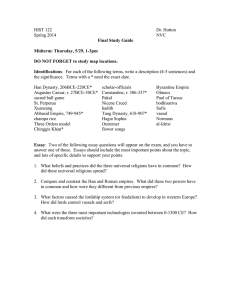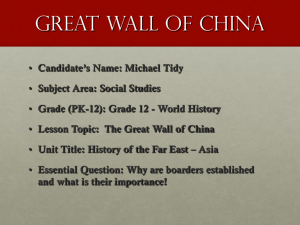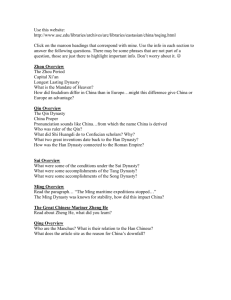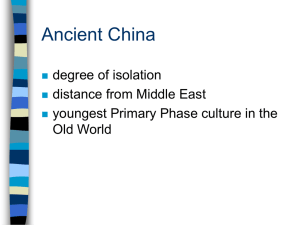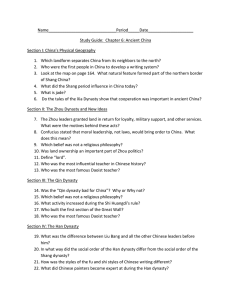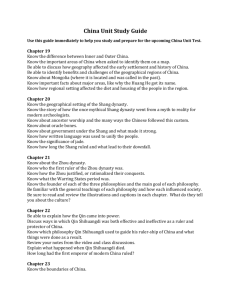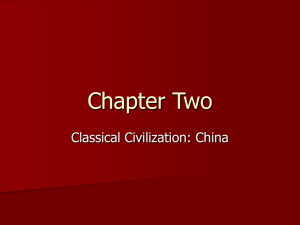Great Wall of China: History & Map Worksheet
advertisement
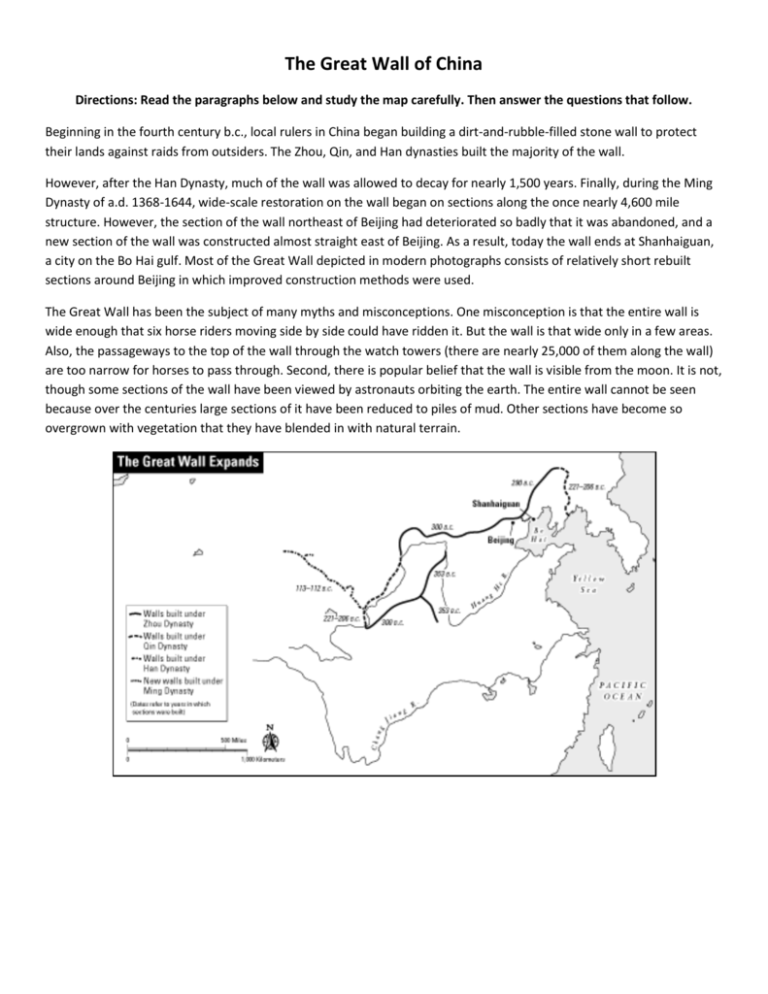
The Great Wall of China Directions: Read the paragraphs below and study the map carefully. Then answer the questions that follow. Beginning in the fourth century b.c., local rulers in China began building a dirt-and-rubble-filled stone wall to protect their lands against raids from outsiders. The Zhou, Qin, and Han dynasties built the majority of the wall. However, after the Han Dynasty, much of the wall was allowed to decay for nearly 1,500 years. Finally, during the Ming Dynasty of a.d. 1368-1644, wide-scale restoration on the wall began on sections along the once nearly 4,600 mile structure. However, the section of the wall northeast of Beijing had deteriorated so badly that it was abandoned, and a new section of the wall was constructed almost straight east of Beijing. As a result, today the wall ends at Shanhaiguan, a city on the Bo Hai gulf. Most of the Great Wall depicted in modern photographs consists of relatively short rebuilt sections around Beijing in which improved construction methods were used. The Great Wall has been the subject of many myths and misconceptions. One misconception is that the entire wall is wide enough that six horse riders moving side by side could have ridden it. But the wall is that wide only in a few areas. Also, the passageways to the top of the wall through the watch towers (there are nearly 25,000 of them along the wall) are too narrow for horses to pass through. Second, there is popular belief that the wall is visible from the moon. It is not, though some sections of the wall have been viewed by astronauts orbiting the earth. The entire wall cannot be seen because over the centuries large sections of it have been reduced to piles of mud. Other sections have become so overgrown with vegetation that they have blended in with natural terrain. 1. What do the four kinds of lines that depict the Great Wall refer to? 2. What do the dates next to nearly all sections of the wall show? 3. What very short section of the wall is not dated? What does the lack of dates indicate? 4. Which dates fall within the Zhou Dynasty? Which dates fall within the Qin Dynasty? Which dates fall within the Han Dynasty? 5. What was the Han Dynasty's particular contribution to the Great Wall construction? 6. Today a section of the Great Wall is referred to as the Interior Great Wall. Find it on the map and account for that description. Which are older-sections of the Interior or Exterior Great Wall? 7. How does the eastern-most section of the Great Wall as it is seen today differ from the wall as seen in 200 b.c.?





